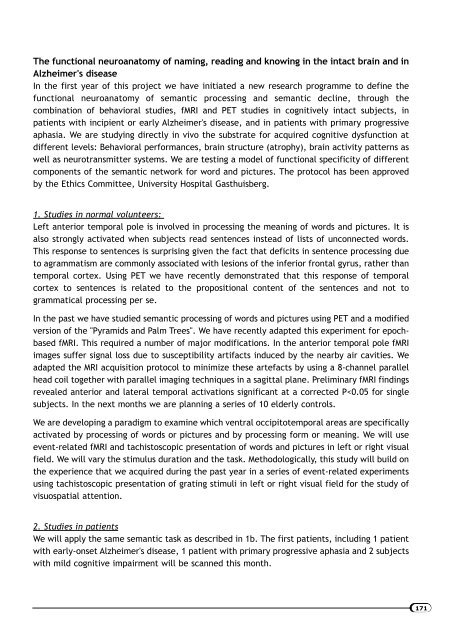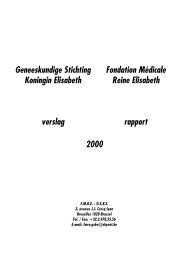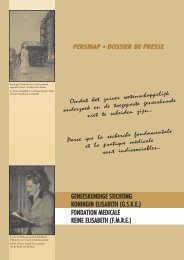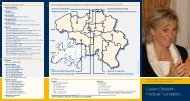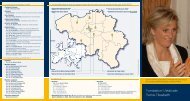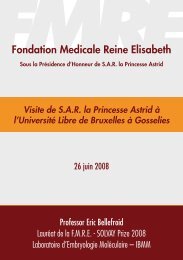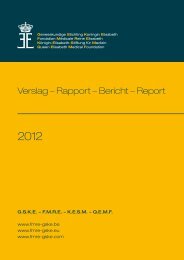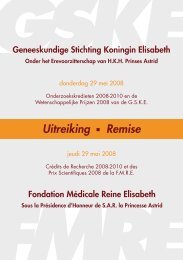Geneeskundige Stichting Koningin Elisabeth verslag - GSKE - FMRE
Geneeskundige Stichting Koningin Elisabeth verslag - GSKE - FMRE
Geneeskundige Stichting Koningin Elisabeth verslag - GSKE - FMRE
You also want an ePaper? Increase the reach of your titles
YUMPU automatically turns print PDFs into web optimized ePapers that Google loves.
The functional neuroanatomy of naming, reading and knowing in the intact brain and in<br />
Alzheimer's disease<br />
In the first year of this project we have initiated a new research programme to define the<br />
functional neuroanatomy of semantic processing and semantic decline, through the<br />
combination of behavioral studies, fMRI and PET studies in cognitively intact subjects, in<br />
patients with incipient or early Alzheimer's disease, and in patients with primary progressive<br />
aphasia. We are studying directly in vivo the substrate for acquired cognitive dysfunction at<br />
different levels: Behavioral performances, brain structure (atrophy), brain activity patterns as<br />
well as neurotransmitter systems. We are testing a model of functional specificity of different<br />
components of the semantic network for word and pictures. The protocol has been approved<br />
by the Ethics Committee, University Hospital Gasthuisberg.<br />
1. Studies in normal volunteers:<br />
Left anterior temporal pole is involved in processing the meaning of words and pictures. It is<br />
also strongly activated when subjects read sentences instead of lists of unconnected words.<br />
This response to sentences is surprising given the fact that deficits in sentence processing due<br />
to agrammatism are commonly associated with lesions of the inferior frontal gyrus, rather than<br />
temporal cortex. Using PET we have recently demonstrated that this response of temporal<br />
cortex to sentences is related to the propositional content of the sentences and not to<br />
grammatical processing per se.<br />
In the past we have studied semantic processing of words and pictures using PET and a modified<br />
version of the "Pyramids and Palm Trees". We have recently adapted this experiment for epochbased<br />
fMRI. This required a number of major modifications. In the anterior temporal pole fMRI<br />
images suffer signal loss due to susceptibility artifacts induced by the nearby air cavities. We<br />
adapted the MRI acquisition protocol to minimize these artefacts by using a 8-channel parallel<br />
head coil together with parallel imaging techniques in a sagittal plane. Preliminary fMRI findings<br />
revealed anterior and lateral temporal activations significant at a corrected P


